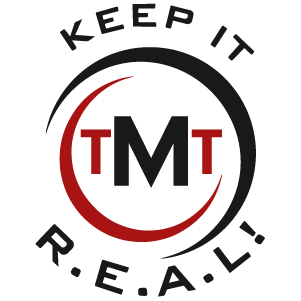 There’s an old sales joke about a hotshot sales guy sitting down with a little old lady to sell her a new heater. He tells her all about how the heater is made in America and has the highest-quality ratings for efficiency and safety, about the BTUs, construction, warranties and other features. When he finally shuts up, she says, “I only have one question – will this heater of yours keep a little old lady warm?”
There’s an old sales joke about a hotshot sales guy sitting down with a little old lady to sell her a new heater. He tells her all about how the heater is made in America and has the highest-quality ratings for efficiency and safety, about the BTUs, construction, warranties and other features. When he finally shuts up, she says, “I only have one question – will this heater of yours keep a little old lady warm?”
I see this mistake a LOT in marketing. Salespeople get really hung up on all the FEATURES and start selling those instead of selling the end results the prospect actually wants.
This mistake is even easier to make in marketing when you don’t have the opportunity to ask the person questions and course-correct based on their answers. Therefore, you have to know enough about a prospect population (in general) to hit on common hot buttons, needs, wants and personal agendas and tap into those drivers.
To that end, a constant question I get is: “How do I find out what my clients want so I can sell it to them?” It’s a great question, but the answer is not one many like because it involves TALKING to your clients and prospects, and many shy, introverted “geeks” out there don’t like this critical aspect of marketing research. As Claude Hopkins once said (paraphrased), a casual conversation with half a dozen housewives will teach you more about how to sell laundry detergent than the most expensive and extensive market research and studies.
That’s why I’m imploring you to read the article I pulled from Entrepreneur Magazine. It’s a quick read about how Stuart Landesberg, founder of ePantry, figured out what people wanted by randomly polling potential prospects at Starbucks, bribing them to review his prototype e-commerce site with $5 Starbucks gift cards. It is EXACTLY how the best market research is done. One client at a time, face-to-face, in a casual setting (NOT a sales event). Also NOT in a lab or by anonymous surveys.
Back when I was first ramping up in this industry, I bought tickets to various industry events to TALK to people. I sat in the breakouts, taking copious notes and then discussing the presentation with attendees afterwards during the receptions and networking sessions. I walked the vendor hall, talking to the sponsors about trends, problems and hot buttons. You CANNOT find a better way to research your target market. No survey will replace this.
It’s also important to read industry magazines, blogs and forums, in addition to any books written for that particular niche. Essentially, you need to think the way they think and know the history of the industry, their language (and ALL businesses have a language), the KPIs they pay attention to, as well as trends and hot issues – EVEN IF they have “nothing” to do with IT on the surface.
Of course, if you already HAVE clients, you can and should talk to them FIRST, but you really need to LISTEN and NOT filter with your own bias, which is incredibly difficult to do. Now, as my business has grown, I have a harder time “naturally” writing campaigns for many of my clients because they are where I was 10 or 15 years ago, not today. That means that what’s important to me now and how I think have evolved as my business has grown, which means I have to go BACK to where I was when starting up to really be effective. So what do you need to know? Here are a few things for sure:
- How does their business make money? This includes everything from marketing to getting paid. Anything you can automate, fix, enhance here is a winner.
- What trends are happening, both good and bad? You don’t want to be selling public telephone booths today for obvious reasons. In every industry, there are similar trends that people are moving away from and moving toward. Know what they are.
- How does your avatar client feel about technology? What do they think about it?
- What frustrates your clients to no end? Every industry has a handful of things that are constant sources of frustration. Like getting paid (above), this is another area to look at.
- Overall, the closer you can come to delivering solutions that DIRECTLY impact profitability, sales, competitive advantages, help them capitalize on moneymaking trends or resolve known frustrations, the more money you’ll make too. Making computers work IS an important aspect
of running any business – but you’re down in the “vendor” category along with the electric company and water delivery guy. To move up, you have to have a different conversation about C-level initiatives – but you can only do that if what you create and sell CAN actually have an impact on that level.

